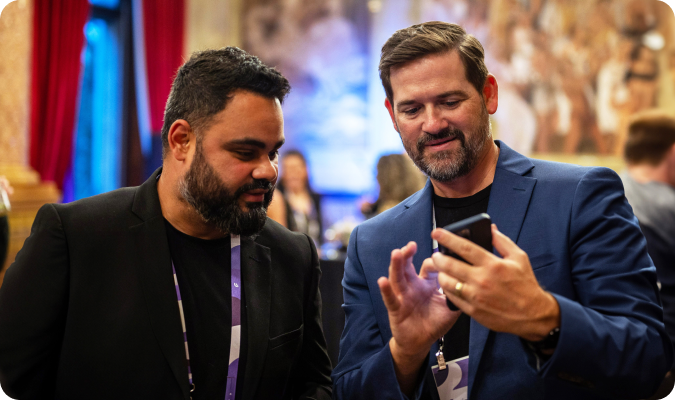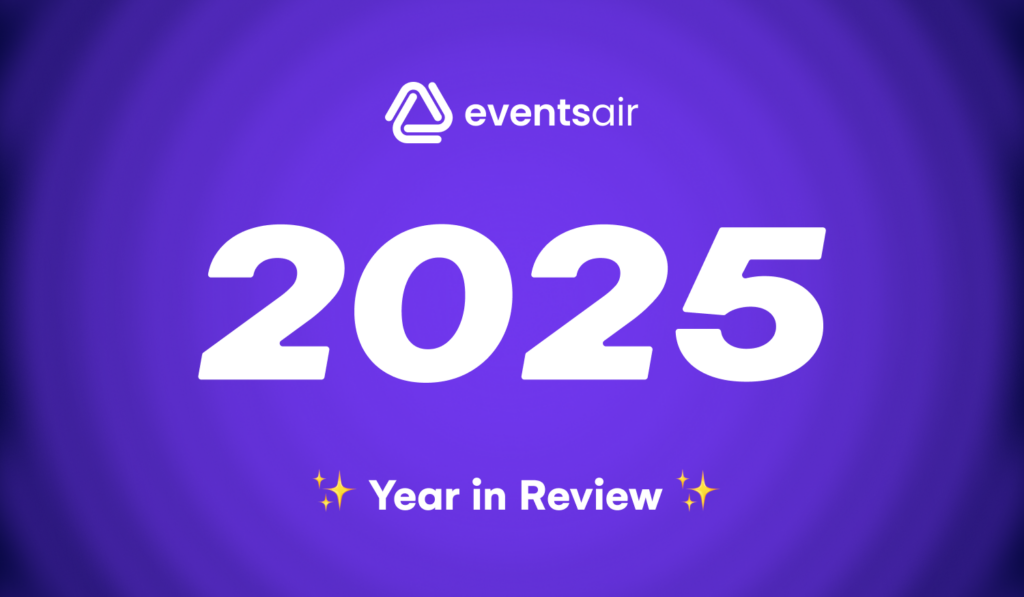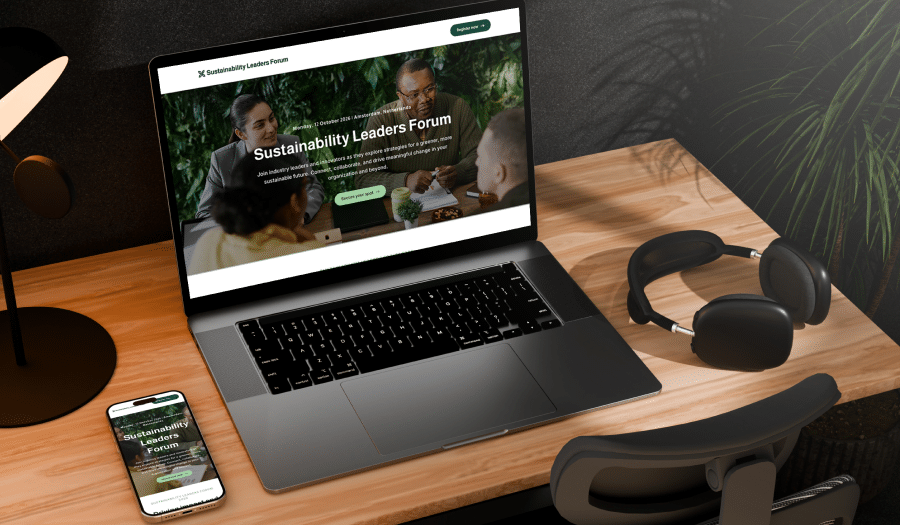
The events and meetings industry has been transformed from what it used to be. No longer driven by organizing bodies with a narrowly defined agenda, modern events encompass broader interpretations of a field or topic, tied together by a unified goal. Of course, this hasn’t lessened the workload of event planners and meeting organizers in the slightest, but it has reshaped the landscape.
Where events were once about a one-way information transfer from an expert speaker addressing an audience, modern events are more collaborative and immersive (Link collaboration article). Attendees still need relevant content by interesting presenters, but they also want to actively engage in all aspects of the conference or meeting experience, interacting with the event organizers, speakers and other attendees.
Technology takes a lot of the credit for this, but there’s more to it. At the core of the change is an acceptance of new learning models that position presenters and technology as facilitators rather than just a delivery mode. These models work in three ways to develop a more complete approach to engagement:
- by bringing together the ideas and experiences of all attendees
- by uncovering or unifying what participants already know
- by helping attendees make new discoveries and connections.
As an event organizer/PCO, creating a conference environment that encourages audience engagement will help you deliver a more satisfying experience for all attendees and connect them to the vendors or sponsors for future involvement. In this feature article, we look at five ways you can reshape your event to fit the new landscape and boost attendee engagement.
1. Meaningful, multi-directional conversations

The clear majority of event planners have already mastered the first step: recognizing that it’s not enough to just talk to your attendees – you need to listen, too. Organizers are growing more aware that conversations can’t just be two-way, either, and beginning to facilitate attendees’ connections with other attendees, presenters, and organizers. Our conversations also extend beyond the main event in both directions, before and after, and in the spaces between formally programmed sessions.
Conference planners can encourage these conversations by providing collaborative spaces, communal areas, and social networks that draw in attendees and invite them to participate fully in the event experience.
Whenever you collect opinions from your event attendees, using surveys, social media, or your registration form, you’re effectively having a conversation that will help you tailor the event to suit your attendees. Presenters can even collect feedback during an event to steer the session in a suitable direction.
2. Diverse experiences to match a diverse audience
Modern professionals are expected to have diverse and transferable skill sets. Compared to fifteen years ago, they’re far less likely to have followed a single, well-defined career path, and more likely to have a varied background across several job roles and industries. It’s only natural for them to expect a conference experience to match – one that steps outside the traditional boundaries of their careers and into related fields or disciplines with potential crossover applications.
They’ll also be interested in hearing speakers from a range of backgrounds that reflect, in some way, their own journeys and challenges. So, while you’ll always want to choose interesting and inspirational speakers with broad appeal, don’t lose sight of the bigger picture — build diversity into your selection of presenters and panel guests. If you underrepresent any minority groups in your audience, you risk diminishing their conference experience or even alienating them. If no local speakers are available, it doesn’t need to be a deal-breaker; bring in a high-profile remote speaker via videoconferencing instead.
3. Wide-reaching and strategic social media
Social media has become a big part of our everyday lives, so it’s understandably important in event planning, too. Your attendees are bound to talk about your event online, so it’s important to get involved early. Then, maintain that conversation right through the event and throughout the year.
Influencer marketing has gained popularity in recent years, both in addition and as an alternative to platform-specific paid advertising. Many event organizers now opt to work with high-profile individuals to increase their social media reach and find a broader audience. If your influencer works in a field that’s closely related to your event, or if they give general motivational speeches, they might also make a suitable speaker. Their fans and followers will almost certainly want to register and meet them.
Despite the boom in social media influencers, organic social media promotion still plays a key part in boosting onsite engagement. Social media platforms are where you initiate conversations (link social media article), and where your fans and followers can advocate for your brand. Use as many channels as you need to reach your full audience, including Facebook, LinkedIn, Twitter, Instagram, and the underutilized Snapchat, Pinterest, and Google Plus.
There are no hard and fast rules about what you can talk about, so don’t shy away from addressing the hard issues on social media. Build anticipation about your event by sharing new speakers and topics regularly and offering exclusive deals for your social media tribe. And if someone makes a compliant, keep your tone positive and helpful, and make sure you’re taking steps in the real world to ensure the problem can’t arise again.
You can also strengthen your social media presence by facilitating better social sharing onsite. Prominently feature signage and props around your event communal areas and remind everyone about your event hashtags. It’s a quick way of building your brand into your delegate’s message to tell the full story.
4. Interactive sessions for an empowered audience

When you incorporate interactive elements into your event design, your delegates feel like they’re actively guiding the event’s direction – and they’re right. This higher level of involvement leads to a more engaged audience and a better event experience.
Interactive sessions can take a variety of forms, including hands-on workshops and master classes as well as classic Q&A sessions. You’ve already invited expert speakers to your conference, so why not invite them to join a panel where they can discuss differing views and answer audience questions?
Technology has made it easier than ever to create interactive events, with event mobile apps or voting devices creating a direct line of communication between the audience and presenter. Everyone gets a chance to have their say, even if they’re too shy to share out loud. And speakers can tailor their sessions on the fly, with live polls to better understand the participants’ backgrounds, areas of interest, or knowledge of a particular topic.
Beyond the session, any data you’ve collected can be repurposed to create digital marketing elements for your future events. You could prepare a list of FAQs, a series of blog posts or webinars, a podcast, an industry report, or a white paper. In fact, many engagement strategies can extend beyond organized conference sessions. Try building social media or livestreaming into your sessions to reach a broader audience, and allow space in your site plan for communal areas that will draw attendees in and encourage them to interact socially and professionally.
5. Immersive events, driven by the latest technology
Earlier, we argued that changes in the event landscape are being driven by new models of learning and engagement strategies rather than just by technological advances. But let’s give intuitive technology its due: it plays leading role in creating immersive event experiences.
The increase in mobile apps for event attendees has been accompanied by increased gamification of events, providing a stimulus to drive desirable participant behaviors. (It’s fun, too.) If promoted effectively before and during the event, many participants will download and use the app, simplifying event communications and creating additional opportunities for interaction between participants, speakers, and organizers.
If you’re looking for a simple and convenient way for your attendees to
- save interesting events to a personal agenda
- purchase in-app tickets, and check-in for sessions or functions
- view suggested sessions based on their profiles and selected events
- receive push notifications for session updates and reminders
- set up meetings with exhibitors and other attendees
- find new connections who share similar interests
- ask the presenter a question without waiting for a microphone
- answer poll questions asked by the presenter
- share interactive event content
- earn points toward prizes, using location services or mobile check-in
then a mobile app might be the perfect technology solution (link mobile article) for your event. As a bonus, it will also help you collect the information you need to provide a premium experience for your guests.
The future of attendee engagement
Today’s events are driven by collaborative engagement strategies and enabled by immersive technology. By shaping your event to fit this new landscape, you’ll create a more satisfying experience for your attendees and sponsors, and a more successful event.
If you’re interested in hearing more about boosting onsite engagement at your events, get in touch with one of our EventsAir consultants live online or contact us.
For EventsAir Community, the tools for engagement are within your reach.
- Login to your User Portal to access whitepapers and webinars to get started today.
- This months Advanced Webinar will give a hands-on demonstration of gamification. Make sure to find your invitation in your emails.
- You can also access our tailored consultancy to help kickstart your Gamification Strategy with AIRTime. Live chat with our event consultants now or complete a form here.
Attendee Engagement | Attendee Experience | Event Technology & Apps
See EventsAir in action
Discover why 12,000+ event professionals trust EventsAir to deliver effortless events, every time.




